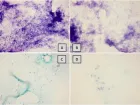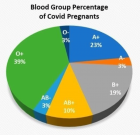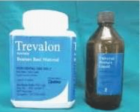Current Issue (Volume - 8 | Issue - 1)
Long monitoring of Birds of Elssuki Area. Sinnar State, Sudan
Published on: 16th April, 2024
This study aims to make a database of the birds in the area of Elssuki, Sinnar state - Sudan. The period of study spanning from 2008 to 2023 with a mix of methods used to identify bird species in many sites in the locality, these methods include road count, line transects, and direct count besides registering every strange, rare, or unusual single species seen in the area. All these methods are used by different researchers and applied in such studies in Sudan.The study revealed that the area is one of the important areas enriched of birds in Sinnar state of 19 orders 53 families. The total number of species is 129 species. It included all birds; water birds, tree birds, diving birds, dabbling birds, swimming birds, small waders, and passerines which the most. The study concluded that there is a need for comprehensive and regular studies and short and long-term monitoring to identify, classify, and establish a database for Sudan Birds Atlas.
Complications of External Otitis in Horses
Published on: 21st May, 2024
The physiological removal of foreign bodies in the horse’s external ear canal is best achieved by head-shaking. However, external otitis in the horse induces moderate to severe pain: therefore, the horse does not shake his head. The causes of external otitis are dust, water in the external ear canal, keratin, and ceruminous debris. The clinical symptoms are ear discharge, skittishness, facial nerve paresis, and/or head tilt. After the horse has been sedated, the most important diagnostic procedure is the endoscopy of the cartilaginous and osseous part of the external ear canal, including the evaluation of the transparency of the tympanic membrane. The clinical complications of external otitis are hearing loss, facial nerve paresis, head tilt, hypertrophy of the tympanostylohyoideum, and corneal ulcers. The most important treatment is soaking up the exudate in the osseous part of the external ear canal using small cotton balls which are held by the foreign body forceps of the endoscope. Based on the results of the culture of exudate and the antibiogram, an antibacterial drug must be administered orally for 3 to 4 weeks. At this time, an endoscopy of the external ear canals and guttural pouches also has to be done. Based on the outcome of the endoscopy, endoscopic and clinical investigations have to be performed six months later as well. Only 7/19 horses had a normal osseous part of the external ear canal with a transparent tympanic membrane, including normal hearing measured by the brainstem auditory-evoked response after one month of treatment.
Myiasis in a Backyard Pig: A Case Report
Published on: 27th May, 2024
Background: Myiasis is a parasitic infestation of livestock animals caused by dipteran larvae. The presence of wounds, lack of hygiene on the farm, and temperate climatic conditions contribute to myiasis. Swine can be infested by myiasis if injured pigs are not treated properly and failure to treat myiasis in time may cause the culling or death of the pigs, resulting in huge economic loss to the farmers. But like humans and other farm animals, pigs also deserve to be treated and cured of any suffering or disease. Therefore, this study is documented on pig myiasis and its management because to date a few cases have been reported on it.Case presentation: This case report documented the successful management of neck myiasis in a male, 9-month-old, 12-kg-weighing backyard pig. The wound site was cleaned using antiseptics and maggots were removed. The site was treated with turpentine oil, and ivermectin at 0.2 mg/kg B.W. and S/C. A combination of streptomycin (12.5 mg/kg B.W.) and penicillin (20000 IU/kg B.W.) was used IM daily for 5 days to prevent secondary bacterial infection. The wound was dressed regularly on every alternate day until the complete removal of maggots and the formation of granulation tissue.Conclusion: Through proper therapeutic management, the backyard pig’s neck myiasis wound was successfully healed in 10 days without any complications.
Comparative Analysis of Water Wells and Tap Water: Case Study from Lebanon, Baalbeck Region
Published on: 5th September, 2024
Water deficit is a fundamental factor in public health and economic growth. Water supply and population growth are directly linked to water demand. The physio-chemistry and microbiology analysis of water is utmost significance in dietary requirements. Drinking water has the main concern especially it affects food security. This study includes a number of representative sites where 24 water samples (from wells, reservoirs and tap water) were analysed. These sites are located in the western villages of Baalbeck, the main city of the Bekaa Plain in Lebanon where the analysed water is used mainly for domestic needs and for irrigation. This study investigates the physiochemical and microbiological properties. Among the selected sites, Hawsh Barada site shows a strong contamination by nitrate. At the Nabi Rashaded (tap), Beit Shema and Bednayel (borehole and tap), contamination above the norm by zinc ion was noted. From a microbiological point of view, Hawsh barada, Nabi-Rashadeh, Hawsh-bay, and Beit shema are markedly polluted and do not meet the standard for drinking water. Hence, water quality in Hawsh barada, Nabi-Rashadeh, Hawsh-bay, Beit shema and Bednayel are not suitable for drinking, and this must be informed to decision makers who can act implementing environmental controls for health protection in the studied region.
Comparing Immunity Elicited by Feedback and Titered Viral Inoculation against PEDV in Swine
Published on: 13th November, 2024
Porcine Epidemic Diarrhea Virus (PEDV) can infect pigs of any age, but the disease severity varies significantly, particularly affecting neonatal piglets due to their immature immune system. Various vaccination strategies have been questioned for their efficacy, especially since outbreaks have occurred even on vaccinated farms. Recent suggestions indicate that exposure to the virus may enhance the effectiveness of inactivated vaccines, highlighting the potential benefits of using attenuated viruses to generate immunity in sows without prior exposure. This study aimed to evaluate the humoral and cytokine responses in pregnant sows and their piglets after inoculation of affected piglet intestinal contents and a virus isolated. We measured immune parameters such as IL-12, IL-22, IgG, and IgA, as well as neutralizing antibodies in serum, colostrum, and milk. Notably, higher titers of neutralizing antibodies were found in sows immunized with the viral inoculum, while IL-12 and IL-22 levels showed no significant differences. Additionally, we assessed productive parameters like total piglets born, weaning mortality, average birth weight, and stillborn rates. The results indicated that sows treated with affected piglet intestinal contents had higher mortality (48.31%) and stillborn rates (20.96%) compared to those receiving the isolated virus (30.02% and 10.44%, respectively). These findings suggest that using an isolated virus can offer a safe, long-lasting, and specific immune response, underscoring the importance of thorough analysis of both systemic and mucosal immune responses against PEDV.
Intrauterine Therapy with Platelet-Rich Plasma for Persistent Breeding-Induced Endometritis in Mares: A Review
Published on: 10th December, 2024
This review aims to emphasize the scientific focus on platelet therapies by presenting the results already obtained in mares susceptible to Persistent Breeding-Induced Endometritis (PBIE), as well as highlighting opportunities for further improvement. The recent publication demonstrating the absence of bacterial growth in susceptible mares treated with PRP underscores the potential of regenerative therapies to control infections without promoting the emergence of multidrug-resistant bacteria. Alternative therapies have gained prominence in the current public health context, with the World Health Organization listing antimicrobial resistance among the ten most significant global threats. Endometritis is the leading cause of subfertility in mares, and empirical antibiotic therapies are commonly used in the field due to market pressures related to the high financial value of embryos, along with logistical challenges in obtaining laboratory-dependent diagnostic results. Platelet-Rich Plasma (PRP) is an alternative therapy derived from whole blood plasma with a high concentration of platelets. Its anti-inflammatory, regenerative, and antimicrobial properties are particularly tested when traditional therapies fail to achieve the desired effect. In recent years, research on the use of PRP in equine reproduction has primarily focused on endometritis, with a particular emphasis on persistent breeding-induced endometritis (PBIE). However, there is a growing interest in other platelet derivatives, such as lyophilized platelet-rich plasma and platelet lysate, which offer practical field applications.

If you are already a member of our network and need to keep track of any developments regarding a question you have already submitted, click "take me to my Query."


















































































































































